How do I know if the water damage is serious or just cosmetic? Gold Coast Flood Restorations explains that key warning signs like visible mold, stains on walls, and soft spots can help identify home water damage severity in San Diego properties. Detecting hidden water damage early prevents structural damage and costly repairs.
—
Part 1: Understanding Water Damage
What Does Water Damage Look Like? Key Warning Signs in San Diego Homes
Water damage shows up in many ways. It can cause big problems if you don’t fix it fast. Watch for these signs in your San Diego home:
- Visible Mold: Mold growing on walls or ceilings means moisture is there. Check it out right away.
- Water Stains: Brownish spots on walls or ceilings often mean leaks. They can get bigger over time.
- Warped Wood: Wood floors or furniture can bend or twist from too much water. This can weaken them.
- Sagging Floors: Floors that feel soft or sink when you step on them might have serious water damage below.
- Peeling Paint: Paint that starts to come off usually means water is trapped under the surface.
- Musty Odor: A constant damp smell tells you there’s hidden water damage and maybe mold too.
- Bubbling Paint: When paint forms bubbles, moisture sits underneath and causes this problem.
- Cracking Paint: Cracks in paint happen when materials swell and shrink because of water changes.
Keep an eye out for these signs to catch water problems early.
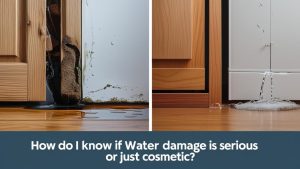
Identifying Serious vs. Cosmetic Water Damage: A Homeowner’s Guide
Not all water damage is the same. Some damage needs fast fixing, and some looks bad but isn’t dangerous. Here’s how to tell the difference:
Serious Water Damage
- This kind can harm your home’s structure and needs quick repair:
- Affects key parts like beams or the foundation (structural water damage).
- Happens after big floods, soaking walls, drywall, or insulation (major water damage).
- You might see bent wood, lots of mold, or broken safety features like wiring.
Cosmetic Water Damage
- This type mostly hurts looks, not safety:
- Small stains or bubbled paint that don’t weaken materials (minor water damage).
- Usually only on non-important surfaces.
- Fixes might be as easy as repainting or patching spots.
- No signs of rot or serious decay underneath.
Knowing the difference helps you decide what repairs matter most. For San Diego homes, where flooding can happen, this is pretty important.
If you’re unsure about what you see, a professional inspection from Gold Coast Flood Restorations could help you figure things out.
Recognizing the Severity of Water Damage
How to Tell Water Damage Severity: Minor vs. Major Issues
Water damage can cause problems that are small or really big. It’s key to know the difference so you can fix it fast. This saves money on repairs later.
Minor water damage usually shows up as small damp spots or light stains. It often comes from clean water, like a dripping faucet or just some condensation. These problems are easier and cheaper to fix if you act fast.
But major water damage means lots of water has soaked areas like walls or floors. Sometimes, the wood gets warped or the materials start breaking down. This happens with dirty water from floods, sewage backups, or storm damage. Fixing major damage usually needs pros because it can cause health risks and mold.
If you ignore big water damage, you might get:
- Weak building parts
- Mold growing
- More expensive repairs
Act quickly if you see wood swelling, paint bubbling, bad smells, or mold. Finding problems early stops them from getting worse.
Assessing the Severity of Water Damage: A Step-by-Step Approach
Here’s how to check how bad your water damage is:
- Inspect the Source: Find where the leak comes from. It could be clean water (like a broken pipe), gray water (like dishwasher overflow), or black water (sewage). The type changes how bad the damage is and how you clean it.
- Evaluate Affected Area: See how much space got wet. Small spots under sinks are minor. Big areas soaked across rooms show major issues.
- Detect Hidden Damage: Use moisture meters or infrared cameras if possible. Water can hide behind walls and under floors and cause secret damage.
- Classify Water Type:
- Clean Water: Safe but must dry fast
- Gray Water: Has some contaminants; needs care
- Black Water: Very dirty and dangerous; pros should handle it
- Assess Material Condition: Check if drywall crumbles easily, wood bends a lot, or insulation stays wet after a day. These signs mean serious damage needing experts.
- Document Findings: Take pics and notes for insurance and repair plans.
By checking these things carefully with tools, you’ll know if simple repairs work or if full restoration is needed.
This helps homeowners in San Diego make smart choices about their home safety and avoid big costs later from untreated leaks or floods.
—
If you think your home has hidden or serious water damage in California’s climate, get a pro to inspect it right away. They will give an accurate report and help fix things before they get worse—protecting your house from extra harm caused by waiting too long on either minor vs major water damage situations alike.
Detecting Hidden Water Damage: Signs You Shouldn’t Ignore
Hidden water damage can sneak up on you and get worse if you don’t catch it early. You should know the signs so you can fix the problem before it spreads.
Watch out for wet spots on walls, ceilings, or floors that stay damp for a long time. A musty odor usually means moisture is trapped somewhere hidden. If you notice soft spots in drywall or flooring, it shows water is causing damage underneath.
Peeling paint or wallpaper also means moisture sits below the surface. Sometimes, you might hear faint noises like dripping inside walls—those sounds can hint at leaks you can’t see. Water pooling near your home’s foundation or basement is another clear sign.
Other clues include higher indoor humidity and a sudden rise in your water bill. Both may point to leaks or moisture stuck inside walls or floors.
Here’s a quick list of signs to watch for:
- Wet spots that don’t dry
- Musty odors
- Soft or spongy areas
- Peeling paint or wallpaper
- Dripping or subtle noises in walls
- Water pooling near foundation
- Increased indoor humidity
- Unexplained jump in water bill
Spotting these early helps you call for an inspection and repair fast. Fixing small problems now stops bigger, costly damage later.
Mold from Water Damage: Identifying and Addressing the Risks
Mold often grows after hidden water damage happens. It can cause health problems if you ignore it.
Mold from water damage looks like black stains or fuzzy black splotches on damp walls, ceilings, and other spots. Sometimes you see visible mold, but often it spreads through tiny mold spores floating in the air.
Those spores cause allergy symptoms like sneezing, coughing, itchy eyes, and skin rashes. Long-term exposure may bring serious breathing problems, especially for kids, older adults, or people with weak immune systems.
Here’s what to look for with mold:
- Black stains on surfaces
- Fuzzy black splotches
- Visible mold patches
- Allergy signs like sneezing and itching
- Respiratory issues if exposed longer
Mold isn’t just ugly; fungal contamination inside walls can harm your health too. That’s why finding mold quickly matters after any water leak.
Getting a professional to remove mold helps clear both visible patches and hidden fungal contamination safely. This keeps your home healthy and prevents more damage.
Catching hidden water damage early—and dealing with any mold—helps keep your San Diego home safe and sound without big structural troubles.
Water Damage in Walls: Signs, Causes, and Solutions
Water damage in walls can start small but grow into big problems fast. Noticing it early stops expensive fixes and health issues like mold growth.
Signs of Water Damage in Walls
Watch out for these clues:
- Discoloration: Yellow or brown spots show water seepage.
- Bulging or Warping: Walls swell when moisture gets trapped inside.
- Cracking Paint or Drywall: Cracks happen as moisture makes materials change size.
- Leaks: Drips or damp patches mean plumbing issues behind walls.
- Musty Odor: A smell that sticks around hints at hidden moisture and mold growth.
Common Causes of Wall Water Damage
Knowing causes helps you act quick:
- Plumbing Issues: Pipes that burst, loose parts, or leaks spill water into walls.
- Water Seepage: Groundwater sneaks through cracks in the foundation and soaks walls.
- Roof Leaks Redirected Inside Walls: Bad flashing lets rainwater in, traveling down walls inside.
- Condensation Trapped Behind Drywall: Poor airflow traps moisture, damaging drywall over time.
Effective Solutions for Wall Water Damage
Fix what you see and what you don’t:
- Find and repair leaks fast—call a plumber if needed.
- Cut out wet drywall to dry the wooden frame behind it.
- Use drying tools like fans and dehumidifiers to remove all moisture.
- Apply treatments to stop mold before repairing the wall.
Fixing early keeps small stains from turning into big damage.
Ceiling Water Damage: Identifying and Addressing the Problem
Ceiling water damage harms your home’s look and safety at once.
How to Spot Ceiling Water Damage
Check for these signs:
- Sagging Ceilings: Bulges appear when water collects above ceiling panels.
- Water Stains or Discoloration: Brown marks show old or current leaks.
- Peeling Paint or Plaster Cracks: Moisture weakens surfaces causing flakes or cracks.
Main Causes of Ceiling Water Damage
Two main reasons cause most problems:
- Roof Leaks: Broken shingles, blocked gutters, or poor seals let rain inside attics that drip onto ceilings below.
- Plumbing Leaks: Pipes in ceiling spaces can break, causing wet spots that get worse if ignored.
Protecting Structural Integrity
Ignoring ceiling damage risks weakening beams that hold your house up — which is unsafe.
Steps To Take Immediately:
- Find the leak by checking roof and pipes above (pro help is smart).
- Stop leaks fast by fixing roofing issues or broken pipes; tarps help till repairs finish.
- Dry ceilings with fans after stopping leaks; don’t repaint until totally dry—paint traps moisture causing mold again.
Fix sagging ceilings and stains soon to keep your home safe and avoid hidden dangers like mold from long wetness.
If you need help checking damage from small stains to serious problems, call Gold Coast Flood Restorations in San Diego for trusted support after floods or leaks.
What to Do if You Suspect Water Damage: A Quick Action Plan
If you see signs of water damage, act fast. Look for water pooling or active water flow—that means a leak is still going. Next, call a pro for a water damage inspection. They can find moisture trapped inside walls or under floors that you can’t see.
Taking quick action stops small problems from growing into bigger ones like mold or damaged wood. If you spot standing water, get emergency water removal right away. After that, have a thorough inspection done to check how bad the damage is and where it is.
Getting a reliable estimate from certified experts helps you plan repairs and file insurance claims. Don’t wait too long—delaying makes things worse and more expensive. Quick action and professional help give you the best chance to fix things well and feel safe.
Preventing Future Water Damage: Protecting Your San Diego Home
To keep your San Diego home safe, start with these steps:
- Schedule routine plumbing inspections to catch leaks early.
- Fix roof problems fast to stop roof leaks before they start.
- Clean gutters regularly so rainwater flows away from your house.
- Deal with plumbing leaks immediately, no matter how small.
- Put in moisture meters or smart water detectors near spots like basements or kitchens.
Doing these things lowers the chance of serious damage and keeps mold from growing inside your walls.
Taking care of your home now saves you stress, time, and money later on. Keep watch for signs of trouble so your home stays dry and strong.
Water Damage Repair Cost: Factors Affecting the Expense
Water damage repair costs can really vary. It all depends on a few important things. Knowing these helps you plan your budget better.
The extent of the damage matters most. Small leaks or minor issues usually cost less. Big problems, like water in walls or floors, need more work and materials.
The cost of labor can change the price too. Fixing drywall or plumbing takes skill. In San Diego, labor might cost more because of local rates.
The type of materials affected also plays a role. Drywall is cheaper to replace than hardwood floors or special finishes.
Sometimes, you need specialized equipment or techniques. For example, drying machines for deep water or tools to handle mold after water damage. These add to costs but make sure the job is done right.
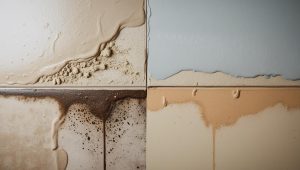
Common causes like plumbing leaks and roof leaks can hide damage at first. If left alone, this hidden damage gets worse and costs more later.
Here’s a quick list:
- Bigger damaged areas mean higher material and labor costs.
- Special restoration methods cost more but work better.
- Finding damage early keeps costs down.
Knowing these points helps you decide when to get water damage restoration done.
Hiring a Professional for Water Damage in San Diego: Gold Coast Flood Restorations
When you have water damage, calling for professional help makes sense. It stops bigger problems like mold or structural damage from starting.
Good water damage contractors give you a reliable estimate after a thorough inspection. They check what you see plus hidden moisture under floors or behind walls using special tools.
Picking trusted pros means fast action, which matters to stop damage from spreading. They also have equipment that DIY fixes don’t offer.
Gold Coast Flood Restorations serves San Diego with quick response times and certified techs trained in every step of water damage remediation. This includes everything from pumping out water to drywall replacement if needed.
Benefits of hiring experts:
- They check everything so you don’t get surprised by extra repairs.
- Work gets done fast, reducing your home’s downtime.
- Experts can help with insurance paperwork when it’s needed.
If you’re unsure how bad your water problem is—serious or just cosmetic—talking to skilled contractors clears things up and gives solutions made for your home.
If you notice signs of serious or minor water damage in your San Diego home, call Gold Coast Flood Restorations now for a free inspection and estimate. Acting fast saves money and protects your house’s value and safety.
FAQs:
What is the difference between clean water damage and black water damage?
Clean water damage comes from sources like broken pipes and is less harmful. Black water damage involves sewage or floodwater and poses serious health risks.
How can I detect hidden water damage in my home?
Look for musty odors, soft spots, peeling paint, and increased indoor humidity. Use moisture meters or hire professionals for accurate moisture detection.
Why is professional water damage inspection important?
Professionals identify hidden issues, assess severity, and recommend proper water damage restoration to prevent ongoing damage and health risks.
Can DIY water damage repair fix serious problems?
DIY repairs can handle minor issues but serious damage requires professional remediation to ensure a permanent fix and protect structural integrity.
What health risks does mold from water damage cause?
Mold can cause allergy symptoms, respiratory problems, and worsen indoor air quality. Black mold is especially harmful and needs expert mold remediation.
How does water damage affect my home’s value?
Water intrusion weakens structures and causes mold growth, reducing home value and complicating insurance coverage for flood or water damage.
Essential Water Damage Prevention Tips
- Schedule regular home inspection to catch leaks early.
- Use moisture meters to monitor humidity levels indoors.
- Install smart water leak detection systems near plumbing.
- Clean gutters to prevent flood damage from roof runoff.
- Repair cracked caulking around sinks and tubs promptly.
- Maintain proper ventilation to reduce mildew risk.
- Apply moisture barriers in basements to block seepage.
Key Water Damage Assessment Points
- Identify the source: clean, gray, or black water affects cleanup approach.
- Check affected materials: drywall, wood rot easily with prolonged moisture.
- Monitor indoor humidity to detect unseen leaks or condensation issues.
- Document all visible signs like discoloration or swelling wood for insurance claims.
Water Damage Emergency Response Actions
- Shut off main water supply immediately upon leak detection.
- Remove standing water using professional extraction services fast.
- Use drying and dehumidification equipment to complete the dry out process.
- Schedule a thorough professional water damage evaluation soon after cleanup.
Understanding Water Damage Repair Costs
- Cost varies by area affected; larger repairs need more labor and materials.
- Specialized services like mold inspection or flood restoration increase expenses.
- Early intervention lowers overall costs by preventing severe structural repairs.
Why Timely Mold Inspection Matters
- Early mold testing identifies fungal contamination before spread occurs.
- Professional mold remediation prevents air quality issues and long-term health risks.
- Mold often hides behind walls; thorough inspection uncovers hidden infestations.
For reliable help with all levels of home water damage evaluation and repair in San Diego, contact Gold Coast Flood Restorations today.

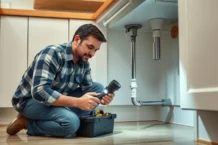
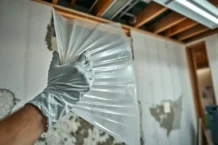
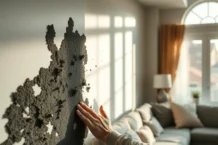
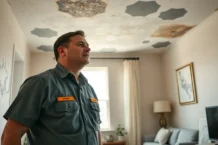
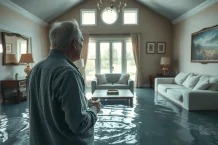
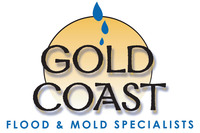


Follow Us!